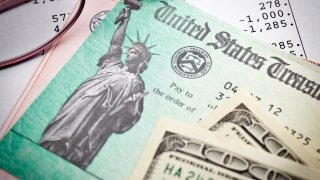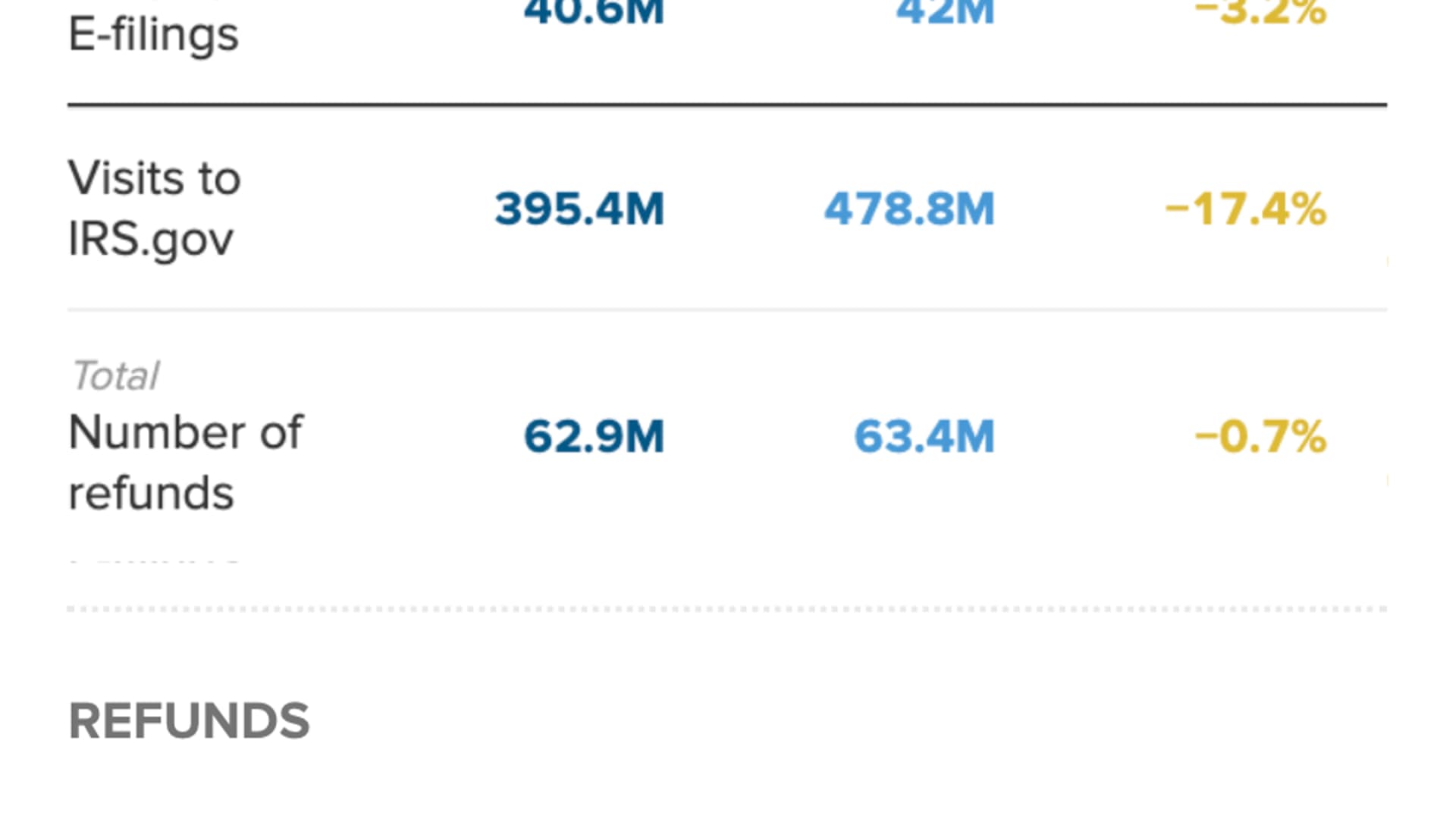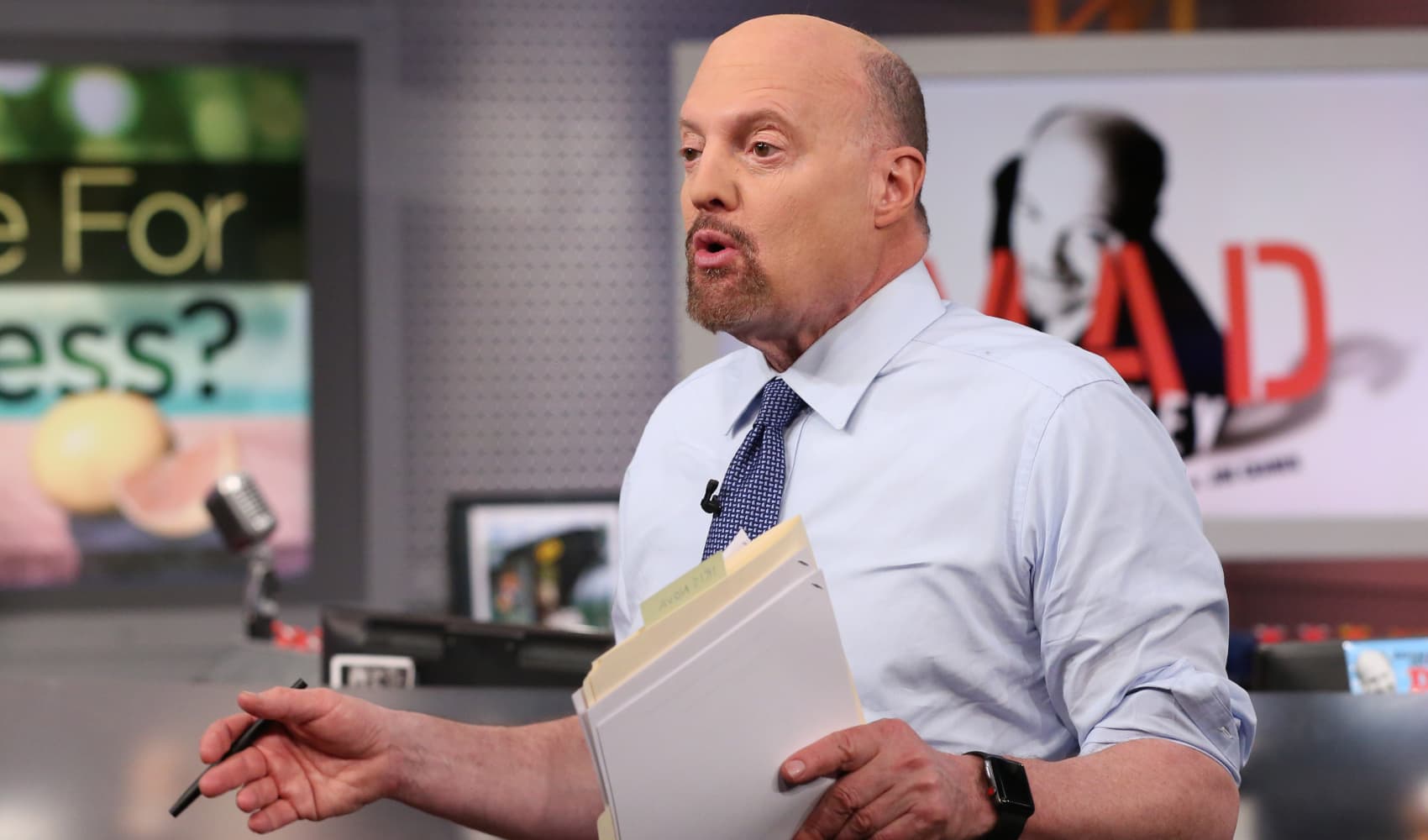
- The latest IRS data shows average tax refunds down roughly 10% versus last year and companies including Walmart have recently commented on the link to consumer spending.
- Historically, Americans use tax refunds to first pay down debt and then for savings, and a new CNBC Your Money survey indicates that is the case this year again.
- With each refund dollar going less far due to inflation and pandemic stimulus savings depleted, those trends will be more prominent and lower overall Treasury checks another headwind for the economy.
Consumers have helped keep the economy humming with higher wages, surplus savings and pandemic stimulus among the sources of increased cash and spending. But as pandemic-related tailwinds run their course, another example becoming a thing of the recent past is bigger than typical tax refunds.
Last week, during its annual investor day, Walmart chief financial officer John David Rainey noted several "cross currents" influencing the retail consumer in the most recent quarter. Covid-era supplemental SNAP food program benefits expired in February. "That's a net negative for us," Rainey said. He noted some offsets, including an increase in Social Security benefits with the cost of living adjustment. But on the tax front, he cited the recent data on average refunds trending down.
"Earlier in the quarter, we were seeing taxes, your tax refunds higher year-over-year, during the last probably five or six weeks we've seen that decline. And I think net through the quarter is actually down year-over-year," Rainey said.
Get Boston local news, weather forecasts, lifestyle and entertainment stories to your inbox. Sign up for NBC Boston’s newsletters.
The exact data on how much the average tax refund is down, according to the latest IRS data through the end of March: a 10.4% decline year-over-year, from $3,226 to $2,910.
"We're definitely more cautious on the consumer," said Jack Kleinhenz, chief economist for the National Retail Federation.

CPI was the big economic report of the week, and while it showed progress on inflation, the overall consumer picture remains far from hitting on any all-clear signal. The next big monthly retail sales report is due out on Friday — as well as the next update from the IRS with the latest filing stats — and the NRF chief economist says to expect more signs of a consumer slowing down. As pandemic-era benefits and tax credit wane, the tax refund data factors into the broader economic picture and the consumer as a source of strength.
Money Report
There is also a lag effect in the data. Historical surveying by NRF and others shows that consumers typically wait until they have the refunds in their accounts to spend, and this year, they are filing tax returns later, a likely result of the pandemic pushing out tax season deadlines and creating a lasting behavioral shift.
"The research shows spending doesn't happen immediately, it continues on for quite a bit of time, so the lower tax refund impacts consumer spending through probably the first half of the year," Kleinhenz said.
In the longer-term context, the decline of over 10% year-to-date in average refund amount is just getting back to what was normal for tax dollars returned to Americans. In 2021 and 2020, the average refund was right around the same $2,900. But there's an important caveat, according to Kleinhenz: People are finding an approximate amount of refund similar to what they've seen in the past but during a period of inflation.
This year, that's the double whammy: less in refund dollars, and those dollars not going as far for consumers. That's especially true in the food category, where low and moderate income consumers feel the brunt of the pain, even as most goods inflation has declined.
"Payrolls are decelerating, if not declining, and people are impacted by the rate of inflation. Even though it is falling it is still causing heartburn," Kleinhenz said.
Historical data also shows that Americans are consistent in what they use tax refunds for: it's first (roughly one-third of Americans) to pay down debt, before adding to savings or spending – at the modest income level, essentials versus discretionary.
A new CNBC Your Money survey released on Tuesday showed that this is the case again this year.
And as inflation has pinched, consumers are devoting more of any refund spending to essentials. In the NRF data from 2022, 31% of Americans said they used tax refunds for everyday expenses, up from 25% in the last pre-pandemic (pre-inflationary year) of 2019. "During a high inflation period more people need to use for everyday expenses, so we're seeing some shifts there," Kleinhenz said.
His data matches up with the findings from the CNBC survey, with NRF expecting more of the declining refund dollars to be used to pay down debt, especially in light of the fact that Americans have taken on more debt as pandemic stimulus has been depleted. The NRF also is expecting a substantial increase this year in the amount of refund that goes to savings accounts to replenish those depleted funds.
All spending, not just retail spending, will be impacted by lower tax refunds, and that will continue into next quarter. None of this means retail sales or the economy turn negative this year (NRF is forecasting 4-6% growth and factoring the tax data into that outlook). But retail sales will decelerate as we move further into the year as wage growth slows and credit constraints weigh on consumers and businesses.
GDP and spending in Q2 could come in "OK, but lower," Kleinhenz said, and consumers still be the driver, "but as we get later into the year, this is when the deceleration in the economy will be most apparent."
He noted some sectors of the goods economy already showing year-over-year price declines, including appliance and electronics stores, home furnishing retail, and general merchandise/department stores.
"We're already seeing inflation in the retail world coming down, except for in food, and that's the big wildcard as I think about what will happen with the consumer in 2023, especially the lower- and moderate-income consumer," he said.
It's been noted often during this "tale of two consumers" economy that two-thirds of spending is done by one-third of consumers. The latest CPI report shows more evidence of how better-off Americans continue to spend, with airfares up again in the latest CPI and restaurant inflation outpacing grocery story inflation for the first time since mid-2021.
A difference of $300 dollars in an average refund won't matter to the well-off, but for much of the individual taxpayer market, the smaller refunds are an economic headwind on the margins of the complicated policy-making position the Federal Reserve finds itself in — to do just enough, rather than the too-much that pushes the economy into a recession. Inflation is declining, there are signs of a slowing labor market, and expectations tighter bank lending will add to the overall slowing economy trend in future data — a new Fed minutes release on Wednesday afternoon showed more concern about banking industry issues tipping the economy into recession. But none of it is yet necessarily enough for the Fed to call off at least one more rate hike.
The smaller tax refunds should not be a surprise to businesses — the data has been mounting over the past four to six weeks. But given the Walmart CFO comments, it may surface in more consumer-related earnings as corporate reporting season begins. It will also be a surprise to more individual taxpayers who filed later and look at what they are getting this year versus last year. As consumers, "It could have a psychological impact that helps determine what they might do," Kleinhenz said.






